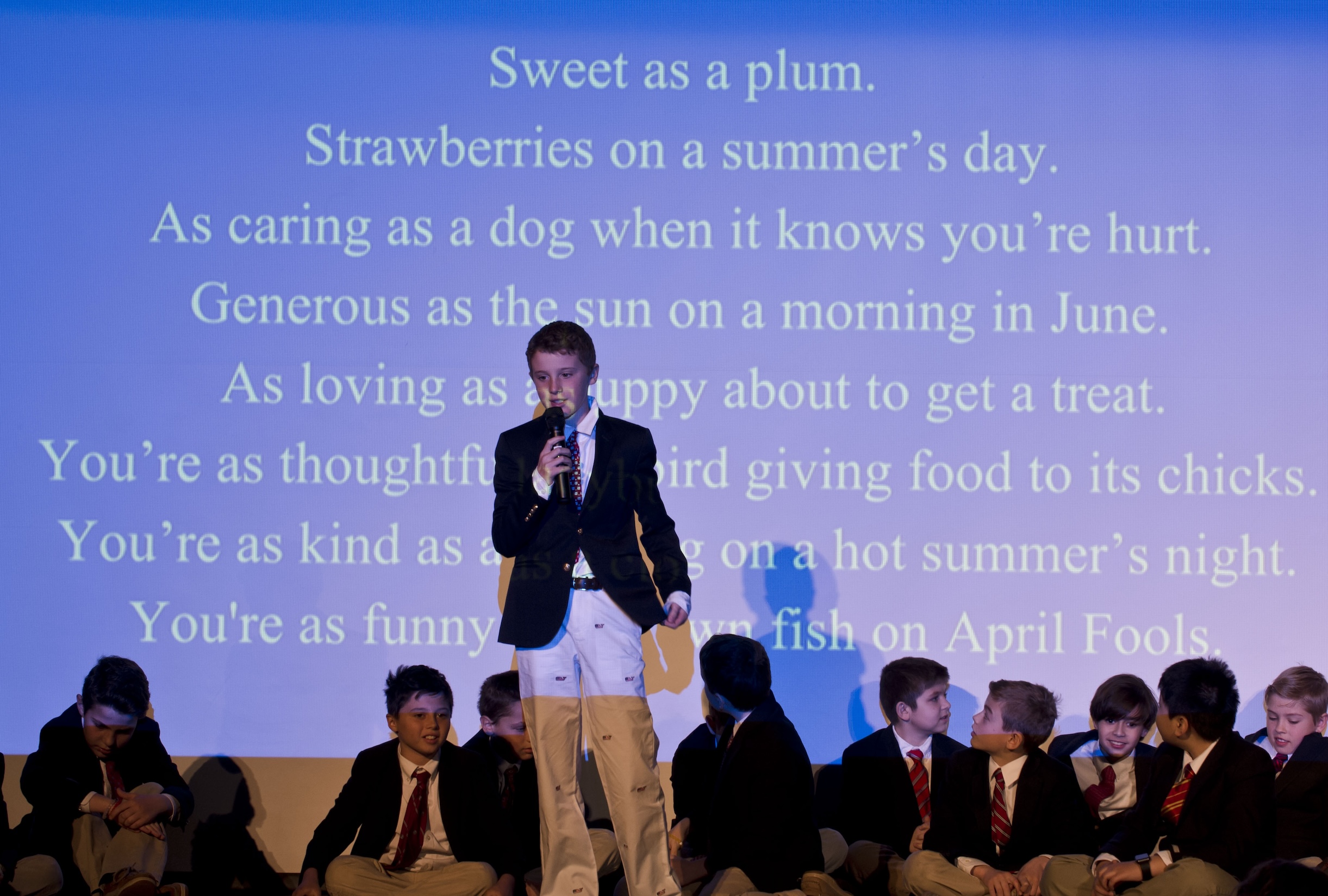Think about the number of times you have been required to interact with colleagues, peers, or strangers in the last week. Have you attended a work meeting? Participated in an important discussion that required a shared consensus? Or simply had to send an email to a group of people? You may be wondering how to teach communication skills like those to your children. After all, you want them to be as successful as possible!
Communication and public speaking are critical skills, and research indicates that they must be honed at an early age. According to Psychology Today, a fear of public speaking affects “approximately 25 percent of Americans,” so it’s best to become practiced in publicly delivering information as soon as possible. Whether they’re attending public or private school in MA (or elsewhere), communication skills for children should be a top priority.
At Fessenden, we promote public speaking as early as Pre-K and Kindergarten, and opportunities to practice and learn the art of communication extend through the Ninth Grade.
The Importance of Oral Communication for Students
The art of communication is multifaceted. A quality educational experience will acknowledge this and teach communication skills for children in a variety of ways. According to an article in Education Week, top employers list good oral communication skills as important qualities, but truly qualified applicants are hard to come by.
The article notes, “relatively few regular public K-12 schools explicitly teach those skills, and even fewer teach them with real-world workplace scenarios.” So, if you’re considering a private school for your child, ask about the ways in which they teach and practice communication with students.

Types Of Communication Skills For Elementary Students And How We Teach Them At Fessenden
How We Teach Written Communication Skills
The development of written skills is woven throughout our private school curriculum, as it is in many schools.
Letter formation: In Pre-k and Kindergarten at Fessenden, students learn letter formation through engaging activities and practice. Early and regular practice helps them develop foundational handwriting skills.
Creative writing: Once they've mastered letter formation, Fessenden students begin exploring their imagination through writing. From journaling, storytelling, poetry, and personal narratives, students of all ages learn how to communicate through writing.
Research writing: As their written communication skills improve, we add research writing into the mix. Our Upper School students (Grades 7-9) learn to investigate topics, gather credible sources, and compile their findings into well-organized and informative reports.
How We Teach Oral Communication Skills
Throughout a child’s time in Fessenden’s Pre-K and Kindergarten program, there are a number of chances for our youngest students to stand before their peers and practice confidence, eye contact, volume, and a general comfort with speaking in front of others. Opportunities at circle time and within classroom environments become gateways to bigger events, such as concerts and play performances.
This skill-building leads to additional experiences as students get older. As they approach Middle and Upper School ages (Grades 5-9), plays and musicals become more advanced, boys are required to deliver a meditation in front of their peers before the end of their Grade 9 year, and they can often be found presenting to faculty and their fellow students as part of in-class studies and project-based learning units.
How We Teach Interpersonal Communication Skills
Individual and group interactions are important aspects of the learning experience.
Interpersonal communication skills include active listening, clear speaking, empathy, conflict resolution, and more.
At the elementary school level, we teach these communication skills through various methods:
Role-Playing Activities: Students engage in role-playing exercises where they practice different scenarios. Through these exercises, they may learn to resolve conflicts or express their feelings in new ways.
Group Projects: Group projects encourage our private school students to communicate, share ideas, and listen to each other.
Class Discussions: When the class discusses a topic together, students learn to speak clearly, listen attentively, and respect others' viewpoints.
Our character education program is what sets us apart from many other Massachusetts private schools, and it is thoughtfully incorporated into our curriculum.
Character is as vital to our culture and curriculum as are science labs and soccer practice—and has been since our founding. It’s woven into music lessons, meal times, and basketball drills. It’s evident in our interactions with one another and in the choices we make when no one is looking.
How We Teach Nonverbal Communication Skills
We constantly teach students that they can say a lot without saying anything at all. Just as there are ways to be respectful, compassionate, and attentive without verbal communication, there are ways to be disrespectful and disengaged without verbal communication.
At our private school, we help students recognize and interpret nonverbal cues, encourage them to be mindful of their own body language, and demonstrate how nonverbal signals can affect interactions and relationships.
This comes into play when we discuss mindfulness and when we represent the School in public—like our annual community service days or field trips—and each day in the classrooms, the hallways, and the dining hall.
Interested in learning more about how our Massachusetts private school can teach your son effective communication skills? Attend one of our events or visit our campus.
Read On

How to Teach Your Child Leadership Skills in Middle School

Public vs. Private Kindergarten: Making the Right Decision

